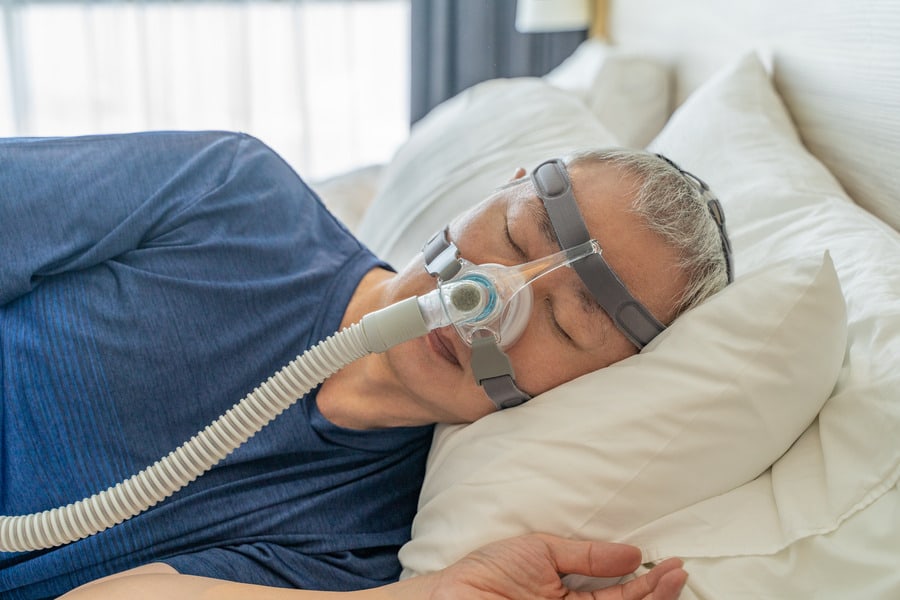Sleep, a restorative phase for our bodies, can sometimes be interrupted by conditions like central sleep apnea (CSA). Differing from the more commonly known obstructive sleep apnea, CSA is a condition less talked about but equally concerning. Let’s dive deep into understanding this sleep-related breathing disorder.
Definition
Central Sleep Apnea (CSA) is a breathing disorder that occurs during sleep, characterized by a repeated cessation or decrease in airflow and effort to breathe. Unlike obstructive sleep apnea, where breathing interruptions are due to a physical blockage, CSA occurs because the brain fails to send appropriate signals to the muscles responsible for breathing.
Overview
Central Sleep Apnea is less common than its obstructive counterpart but can be just as severe. It stems from a failure of the brain’s respiratory control center to prompt regular breathing, leading to longer and frequent pauses in breathing during sleep. This results in less oxygen reaching the blood and causing multiple awakenings throughout the night, severely disrupting sleep.
Symptoms
Detecting CSA can be challenging due to its subtle nature. Common symptoms include:
- Frequent awakenings during sleep
- Shortness of breath leading to awakenings
- Difficulty initiating sleep
- Difficulty maintaining sleep
- Excessive daytime drowsiness
- Mood changes
- Difficulty concentrating during the day
Causes
The causes of CSA vary and might include:
- Congestive heart failure: People with this condition are more susceptible.
- Medications: Some drugs, especially opioids, can increase the risk of CSA.
- Altitude: Sleeping at a higher altitude can trigger CSA in some individuals.
- Medical conditions: Issues like renal or heart failure can induce CSA.
- Brain infections or injuries: Damage to the brain’s respiratory control center can cause CSA.
Risk Factors
Several factors increase the risk of developing CSA:
- Age: Older adults, especially men, are more susceptible.
- Heart disorders: Conditions like atrial fibrillation or heart failure can elevate the risk.
- Stroke or brain tumor: These can impair the brain’s respiratory control.
Prevention
CSA isn’t always preventable, but certain strategies can help reduce risks:
- Manage heart health: Keeping heart disorders in check can lower the risk of CSA.
- Limit opioid use: Long-term opioid use or high doses can lead to CSA.
- Regular medical check-ups: Especially if you have risk factors, regular check-ups can detect potential issues early.
When to See a Doctor
If you or someone you know experiences prolonged periods of daytime drowsiness, mood changes, or difficulties concentrating, it might be time to consult a doctor. Symptoms like snoring, although more associated with obstructive sleep apnea, should also be a cause for concern.
Diagnostic Procedures
If CSA is suspected, a doctor might recommend:
- Polysomnography: Conducted in a sleep center, this test measures various body functions during sleep, including brain electrical activity, eye movement, muscle activity, heart rate, respiratory effort, air flow, and blood oxygen levels.
- Home Sleep Testing: Devices used at home to diagnose sleep apnea.
Treatment Options
Managing CSA can involve a mix of therapies:
- Continuous Positive Airway Pressure (CPAP): A machine that delivers air pressure through a mask, helping to keep the airway open.
- Adaptive Servo-Ventilation (ASV): Designed for CSA treatment, this device adjusts air pressure to normalize breathing patterns.
- Medications: Drugs like acetazolamide or theophylline can sometimes help stimulate breathing and treat CSA.
Living with Central Sleep Apnea
Being diagnosed with CSA can be daunting, but with the right interventions, many people live full, healthy lives. Consistent therapy, regular medical consultations, and adopting a healthy lifestyle can significantly improve the quality of life.
Types of Central Sleep Apnea
While the primary discussion often revolves around the general category of CSA, there are different types to consider:
- Idiopathic Central Sleep Apnea: This form has no identifiable cause and is believed to result from a primary dysfunction in the brain’s control of breathing.
- Cheyne-Stokes Breathing: A type of CSA commonly found in patients with heart failure, where breathing increases and decreases in a cyclic pattern.
- Drug or Substance-induced CSA: Certain medications, especially opioids, can lead to this form of CSA.
- Complex Sleep Apnea Syndrome (Treatment-emergent Central Sleep Apnea): This condition occurs when someone has both obstructive sleep apnea and central sleep apnea. It’s called “treatment-emergent” because it is commonly recognized when a patient treated for OSA with CPAP then exhibits CSA symptoms.
- High-altitude Periodic Breathing: This form of CSA can occur when someone is exposed to high altitude.
Complications
The complications of untreated CSA can extend beyond sleep disruption:
- Cardiovascular Issues: CSA can be both a cause and a consequence of various heart conditions, including atrial fibrillation, heart attacks, and strokes.
- Daytime Fatigue: Due to disrupted sleep, patients often experience daytime fatigue, which can be dangerous, especially when driving or operating machinery.
- Mood Changes: Depression, irritability, and mood swings can be more frequent in people with CSA.
- Memory and Concentration Problems: Disrupted sleep can also impact cognitive functions.
Differential Diagnosis
It’s essential to differentiate CSA from other sleep disorders:
- Obstructive Sleep Apnea (OSA): This is a more common form where the cessation of airflow is due to a physical blockage in the airway, despite the effort to breathe.
- Sleep-Related Hypoventilation Disorders: Here, the emphasis is on shallow breathing rather than interruptions in breathing.
- Sleep-Related Hypoxemia Disorder: This is characterized by low oxygen levels in the blood during sleep without the presence of hypoventilation.
Understanding the nuances of Central Sleep Apnea is essential for both clinicians and patients, ensuring that the right diagnosis is made, and the most effective treatment strategy is employed.
In conclusion, Central Sleep Apnea, while not as commonly recognized as its obstructive counterpart, is a severe condition that requires understanding, early diagnosis, and timely intervention. By being aware of the signs and seeking professional advice promptly, it’s possible to manage and lead a life with quality sleep and overall health.









